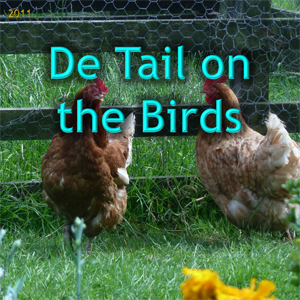 Article for 2011 May 31
Article for 2011 May 31
Part of the “De Tail on the Birds” series.
2011
Appendix

This was a monthly series of articles each focussing on a particular avian species I find interesting, though “Caledonia Gulls” features several species and is in poem form.
May 31 Thu “Myna, not minor”
In April 2011 I was fortunate enough to have a holiday in Sri Lanka, where I added more than two dozen species to my life list (or IBIS, index of birds I’ve sensed, as I prefer to call it). Therefore it makes sense for me to write in detail about one of those Sri Lankan birds. So here are some data about common mynas, Acridotheres tristis.
Common mynas nest in holes in trees or buildings, so have adapted well to urbanisation and suburbanisation. They use a variety of materials to build their nests, ranging from twigs and roots to tissue-paper and abandoned snake-skin. Mynas don’t, of course, hurt the snakes, but they have been witnessed to aggressively remove live chicks from nests that woodpeckers or parakeets (etc.) have made, and take over the empty nests. Such tactics have helped (if that’s the right word) the common myna to invade South Asia (including Sri Lanka), and South-East mainland Asia, and coastal Eastern Australia, and Duncan’s Childhood Blog, and...
Therefore the International Union for the Conservation of Nature has, alongside the European starling and the red-vented bulbul, declared the common myna to be one of the world’s 100 worst invasive species. The following passage is from the IUCN’s website:
“The common myna (Acridotheres tristis), also called the Indian myna, ... lives in close association with humans. It competes with small mammals and bird for nesting hollows and on some islands, such as Hawaii and Fiji, it preys on other birds’ eggs and chicks. It presents a threat to indigenous biota [the wildlife of a region], particularly parrots and other birdlife, in Australia and elsewhere.”
Common mynas are related to those invasive European starlings, and are in several other ways similar. They’re quite small, between a sparrow and a pigeon in size. Common mynas are mostly darkly coloured except for the feet, beak, and eyes (yellow), and their belly (beigey-grey), and the ends of their tails (white). Like the starling, common mynas are common, hence the first part of their name.
Speaking of names, why’s a “myna” called a myna? It comes from the Hindi name for the bird, which I’ll transliterate as maina. “Myna” in English is sometimes also spelt “mynah” and “mina”, pronounced the same (like “miner” or “minor”).
And what does the scientific name translate as? Acridotheres derives from the Greek for “hunter of locusts” - mynas are omnivorous, with a particular fondness for the grass-hoppers - and tristis is Latin for “gloomy”, probably a reference to the drab dark-grey feathers that resemble attire worn while mourning. Avian ways are definitely different to human ways, because common mynas don’t seem to have much to mourn about, and indeed don’t seem to be mourning: they’re very chirpy and chatty and friendly, like European starlings.

